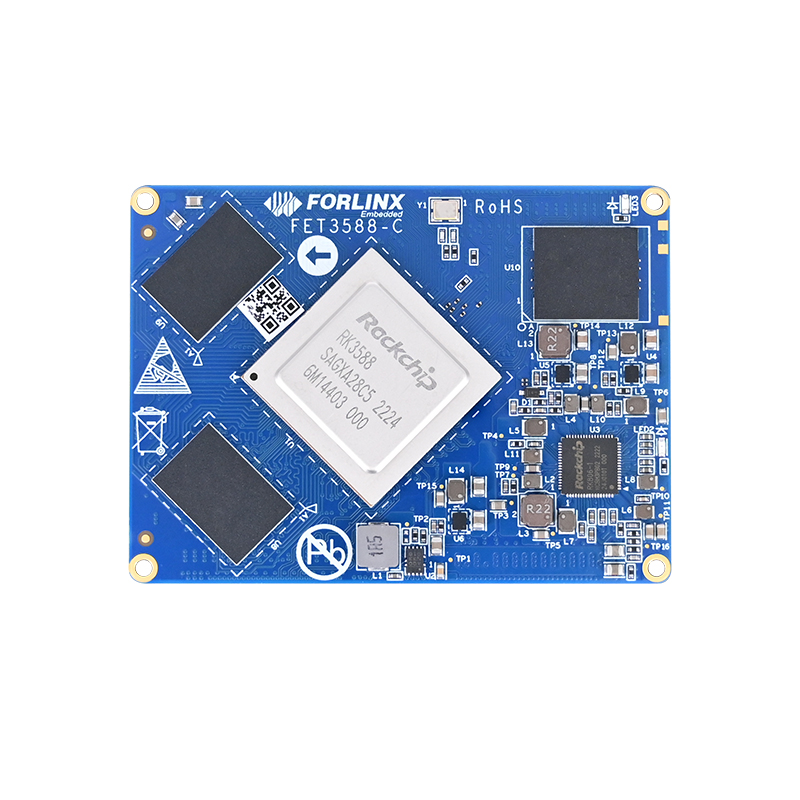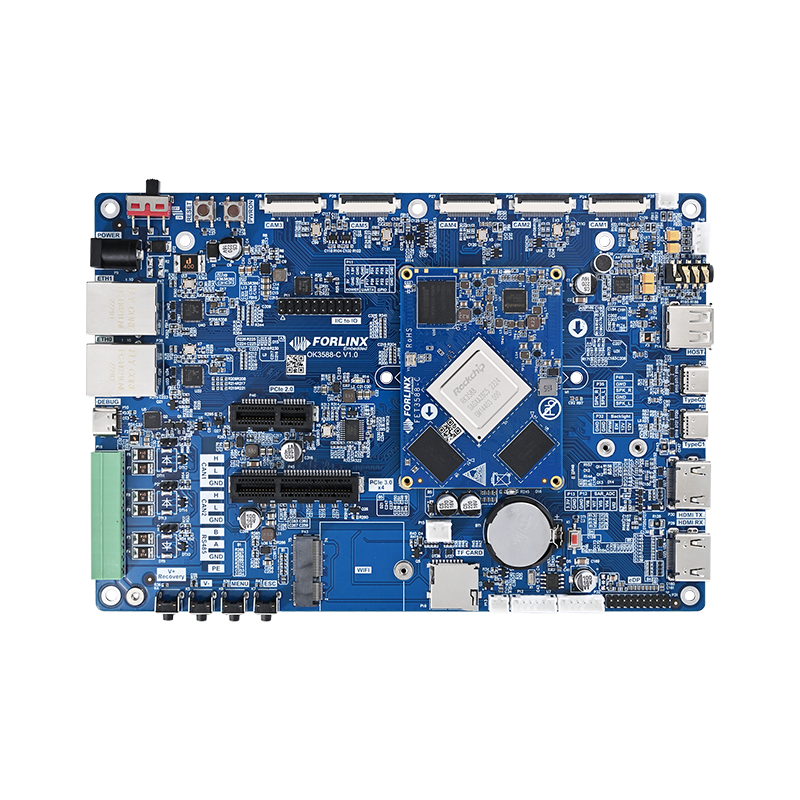
RK3588 Development Board Display Resource Function Allocation
The FORLINX FET3588-C System on Module (SoM) is developed and designed based on Rockchip's flagship AIoT processor RK3588. With the support of Rockchip's fourth-generation latest codec technology, the FET3588-C SOM can support 8K display output, in addition to supporting mainstream In addition to the 8K@60fps H.265 decoder and 8K@30fps H.264 decoder, it also supports 8K@60fps VP9 decoder and 4K@60fpsAV1 decoder, fully compatible with OpenGLES 1.1, 2.0 and 3.2, OpenCL2.2 and Vulkan1. 2.
At the same time, the FET3588-C SOM has 4 display controllers, that is, 4 VPs, which support simultaneous display or different display of four channels of video. The maximum resolution of VP0 is 7680x4320; the maximum resolution of VP1 is 4096x4320; the maximum resolution of VP2 is 4096x4320; the maximum resolution of VP3 is 2048x1080. It can support displaying up to one 8K, two 4K and one 1080P images at the same time.
And the FET3588-C SOM supports HDMI, eDP, DP, MIPI and other display interfaces. Abundant display resources, so that users no longer have to worry about the situation where the display resources of the main controller are not enough.
Not only that, in the Uboot officially provided by FORLINX Embedded, users can easily realize the combination of four display adapters and various display interfaces, and can output various video formats and content you want.
Multi-screen display resources are easily allocated.
What should I do if I want both DP to display 8K images, HDMI to display 4K images, and RGB format 1080P images, and the main interface to be displayed on HDMI?
The Uboot image provided by FORLINX Embedded can make the allocation of display resources as easy as flipping a switch. Next, we will show you how to easily allocate display resources. Here we use the FORLINX embedded OK3588-C development board (FET3588-C SOM +carrier board) for demonstration, so as to call various functional interfaces faster.
Step 1:
Connect the computer and the Debug port of the OK3588-C development board through the Type-C cable, use the serial port tool to open the corresponding com port, and power on to start. Immediately after power on, press the space bar continuously to enter the Uboot selection menu.
Step 2:
Click the number key 2, select display type
First, press the number key 1 to select the display controller VP of the hdmi0 interface, and choose VP2 (4K);
Secondly, press the number key 9, select the display controller VP of the rgb port, and select VP3 (1080P);
Again, press the number key 5 to select the display controller VP of the dp0 interface, and choose VP0 (8K);
Finally, press the A key to select hdmi0 as the main interface, and press the B key to set the initial resolution.
Through the above operations, the display configuration is completed.
Step 3:
So here comes the question, if I have 1000 sets of OK3588-C development boards, should I repeat the above operation 1000 times? Of course not. There will also be a batch method for mass production, and the same operation can be achieved by directly modifying the device tree.As shown in the figure below, only specify the required interface to the corresponding display controller, and comment out the unnecessary interface, so that 1000 sets of development boards can have the same configuration.
For multi-display application scenarios, Forlinx's RK3588 SOM is a very good choice, coupled with the simple and easy-to-use Uboot display resource allocation method provided by Forlinx Embedded, whether it is in your early development or later stage The application links can provide great convenience and help.



